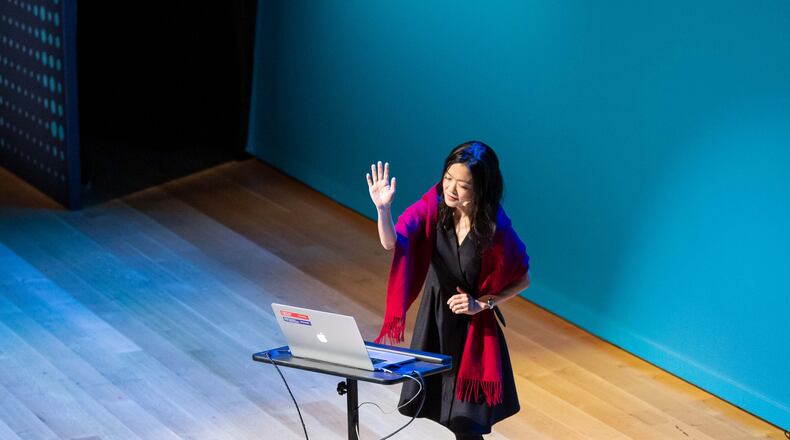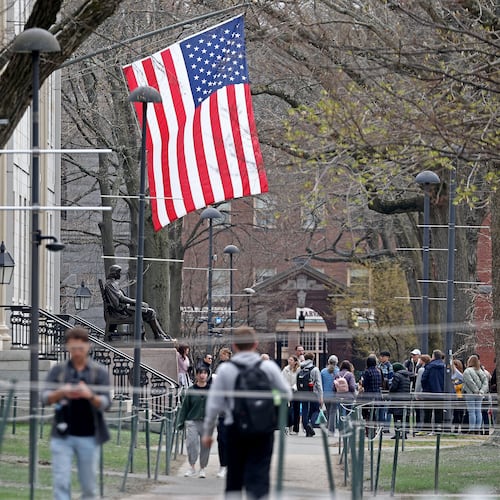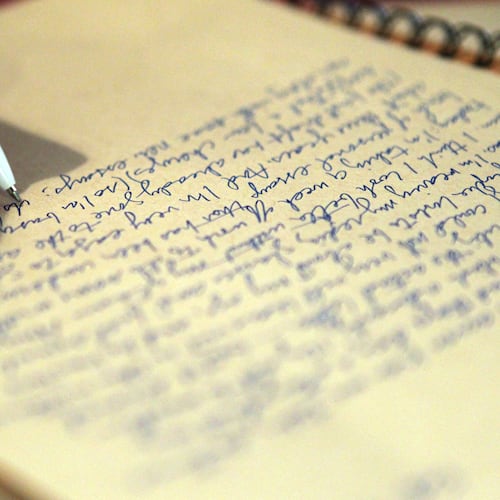What Washington musician Yoko Sen described as the “soundtrack of her life” is not one of the songs she wrote for the band Dust Galaxy, but the alarm of the heart monitor at her hospital bedside.
“The constant rhythm of a cardiac monitor ticking like a time bomb reminded me every second that my life is finite,” she said.
When the U.S.-based Japanese artist fell ill in 2012 and had to spend weeks in hospitals, she found the jarring sounds there detrimental to her healing.
“I thought it was torture,” she said, “the cacophony of alarms, beeps, doors slamming, the squeaking of carts, people screaming, yellow alarm, red alarm, Code Blue.”
Credit: contributed
Credit: contributed
When Sen recovered, she was determined to follow her new mission: She wanted to “humanize” hospital sounds.
How does healing sound?
Or love?
Are there tunes that foster recovery?
So, in 2015, she founded SenSound, a social enterprise to reimagine the acoustic environment in hospitals.
And she is about to announce a breakthrough.
While the pandemic has interrupted some of her projects, including a long-planned sound exhibition in Europe, she and her team used the last year to quietly work with four manufacturers of medical devices.
One participant, Philips, is one of the world’s leading manufacturers of medical equipment, and the company invited Sen to change the sounds of their most popular patient monitor. (Eighty percent of sounds in the ER come from patient monitoring.)
From the stillness of her home outside of Washington, D.C., and surrounded by nature, 41-year-old Sen is addressing a massive, often overlooked problem. On average, a patient endures 135 different alarms each day. Hospitals are often louder than a highway during rush hour. And sleep deprivation is a common complaint.
The cacophony is not only bothersome but can endanger lives. Many caretakers and doctors suffer from “alarm fatigue” — they hear so many abrasive sounds that they risk ignoring important, lifesaving alarms. The effect of the clamor can be numbing, the exact opposite of an alarm’s intent.
At the beginning of her research, Sen first did what a musician does best: She listened.
Working closely with her husband, Avery Sen, an innovation researcher, she interviewed hundreds of patients, nurses and doctors.
“We first tried to understand,” she said, “because you don’t just show up with a solution.”
She decided that the sounds should be functional and safe – but also gentle and respectful.
Over the last five years, Sen and her husband have worked with renowned researchers at the Johns Hopkins Sibley Innovation Hub in Washington, D.C., Stanford University and the Vanderbilt University Medical Center.
She was also an artist-in-residence at Kaiser Permanente and a fellow at the Kennedy Center.
Sen learned that manufacturers of medical devices don’t coordinate their soundscapes; instead, they design the alerts louder and sharper than necessary for fear of someone missing an alarm.
Sen, who speaks with a very gentle, soft voice, seems to have been born with an uncanny sensitivity for music. She begged her mother for piano lessons when she was only 3 years old. The piano teacher told her mother to bring her daughter back when she was 5, but Sen kept insisting.
A picture shows the little girl on the stool in front of a grand piano, her feet far above the pedals. After moving from Japan to the U.S. in 1999, she continued her career as a professional ambient electronic musician, toured with her electro band Dust Galaxy and published solo albums.
For her mission to create a more-soothing hospital environment, Sen found like-minded researchers in Elif Ozcan, who leads the Critical Alarms Lab at Delft University of Technology in the Netherlands, and Joel Schlesinger, an anesthetist at Vanderbilt University who also happens to be an accomplished jazz pianist.
She also learned that everybody experiences sound differently.
“One man was bothered by the nurses’ chat in the hallway, while his wife loved it because it made her feel less alone,” she said. “Some prefer utter stillness; others experience stillness as overwhelmingly oppressive. It’s not just about the volume.”
So, for Kaiser Permanente, Sen transformed a space in Colorado into an interactive area where people could try different sounds at the push of a button and report how it affected them. There was a common denominator: Almost all people found sounds of nature soothing.
Especially for hospice patients, Sen creates soundscapes that the patient can tailor with simple hand gestures. Movement sensors translate a wave of a hand into the sounds of ocean waves or a short symphony. Her gentle compositions remind the listener of waterfalls or rain drops, chimes or a rainforest in the wind.
One company, Medtronic, hired Sen to design new sounds for its homecare heart monitor, which is now available and used by more than 150,000 patients.
The pandemic has increased attention for her work, as patients died and suffered in hospital beds without the soothing presence of their loved ones.
Remembering her grandmother who died surrounded by beeping machines, Sen asked people from all over the world, “What is the last sound you want to hear at the end of your life?”
Many, she learned, wished for the sounds of nature, the laughter of children or the voice of a loved one, and Sen recorded their wish lists for her project “My Last Sound.”
Michaela Haas writes for Reasons to Be Cheerful, a non-profit editorial project that believes it can be the tonic for tumultuous times. This story is part of the Solutions Journalism Network, a nonprofit organization dedicated to rigorous reporting about responses to social problems. It originally appeared here.
About the Author
Keep Reading
The Latest
Featured




